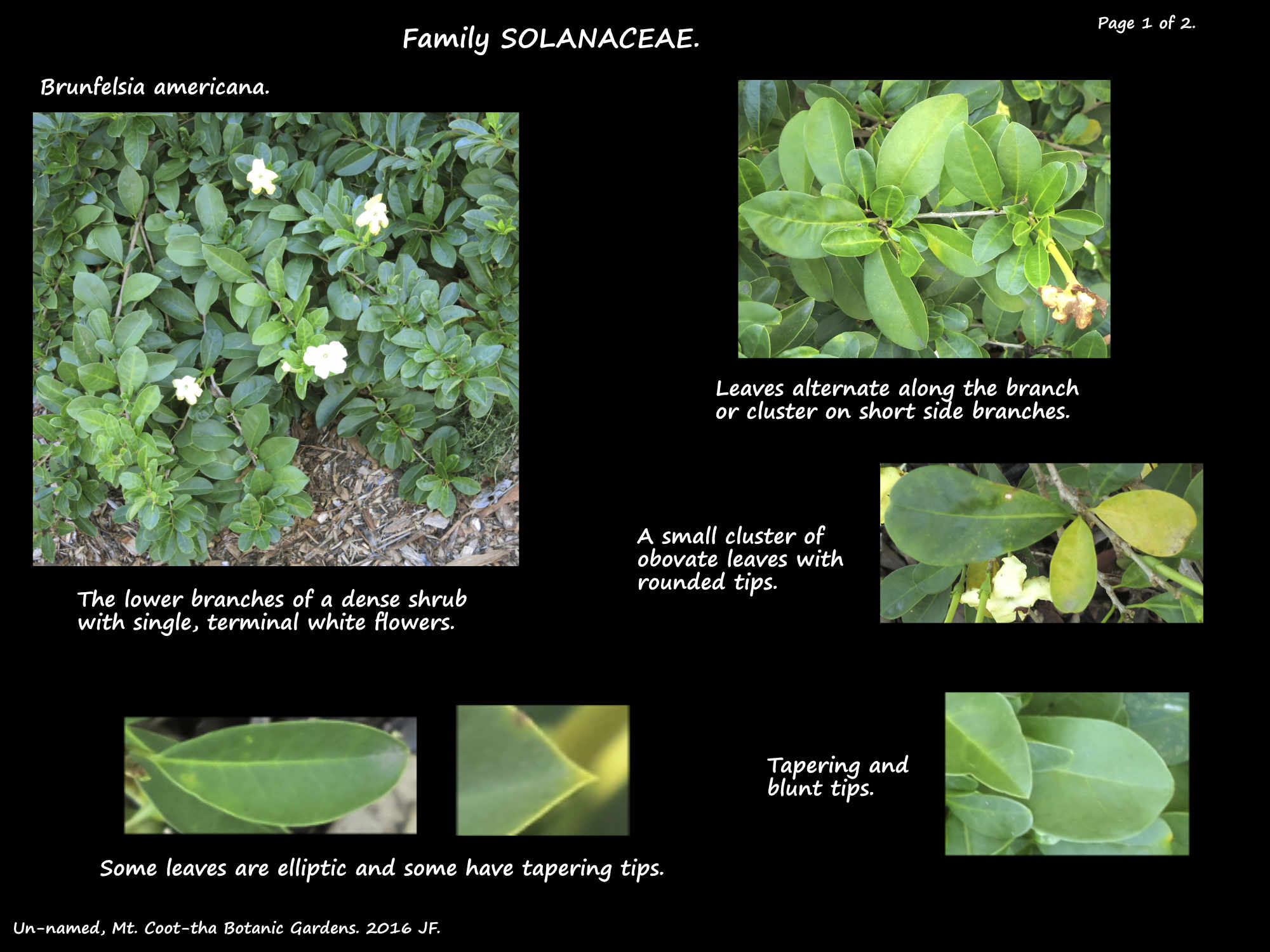Brunfelsia americana.
The Lady of the Night is a dense shrub commonly seen around 2 to 5 m high.
Twigs, leaves and inflorescences all have simple or glandular hairs.
The leaves are alternate along the stems and crowded on short side branches.
The petioles are up to 6 (10) mm long and smooth to densely hairy.
The ovate, obovate to elliptic leaves are variable in size.
Most are under 6 cm long but some may be up to 10 cm.
The wedge-shaped bases may run down the petiole.
The majority of the tips are rounded but some are tapering or have a mucro.
The blade has a leathery feel and may be glossy.
Both surfaces may have no hairs but there are often some on the midrib and veins on the lower surface.
The veins are prominent on the paler green lower surface.
Inflorescences are typically a single flower at the tip of the main branches.
There may also be some on its short side branches.
There are hairs on the 6 or 7 mm long pedicels.
At the base of the pedicel are small hairy bracteoles only 1 to 2 mm long.
The bell-shaped calyx is up to 5 (7) mm long with 5 pointed lobes 1 to 2.5 mm long.
The salverform corolla tube is up to 6 or 9 cm long and 3 to 5 mm wide.
It is a greenish-white and has glandular hairs externally.
The spreading limb, around 5.5 cm wide has 5 round to ovate lobes up to 2.5 cm long.
The lobes have hairs in the throat, are not wavy and the edges have blunt teeth (crenate).
The flowers open white then change to cream or yellow over a few days.
The 2 pairs of stamens are inserted into the upper section of the corolla tube.
They are inserted at different levels with the upper pair just reaching the throat.
The nectiferous disc around the ovary emits a strong scent at night.
The ovoid to conical ovary is around 2.5 mm high with a single style up to 5 cm long.
The numerous ovules in the 2 locules have axile placentation.
The 2 mm stigma is often visible, between the upper pair of anthers, in the throat.
The roughly spherical, fleshy, yellow to orange capsules are up to 2 cm long.
The dried calyx persists around it.
The capsule splits into 2 valves to release the angular brown seeds.
B. undulata is similar but its leaves mostly have tapering tips and the calyx lobes are blunt.
Brunfelsia americana has been crossed with B. lactea.
J.F.



